
We’ve all been there – you declutter over and over but no matter what you do, chores pile up, routines feel impossible to maintain, and your home still overwhelms you.
If this sounds familiar, the issue might be that you’re decluttering too haphazardly. While decluttering areas at random will reduce the overall volume of your belongings, it won't address the key problem areas in your home, creating a 'chore blocker' that makes household tasks more difficult.
That’s why professional organizers recommend identifying the root cause and decluttering at the source. Here, they explain how to pinpoint it and share their top decluttering tips for creating a more manageable, organized home.
Removing 'chore blocks' for a more efficient home
Whether it means organizing overlooked areas of your home or being more ruthless when decluttering problem areas, our expert, but simple tips will instantly relieve these main stressors at home.
We've organized this article by common chore snags to guide your decluttering priorities by the chore that is blocked.
1. Your laundry is never organized
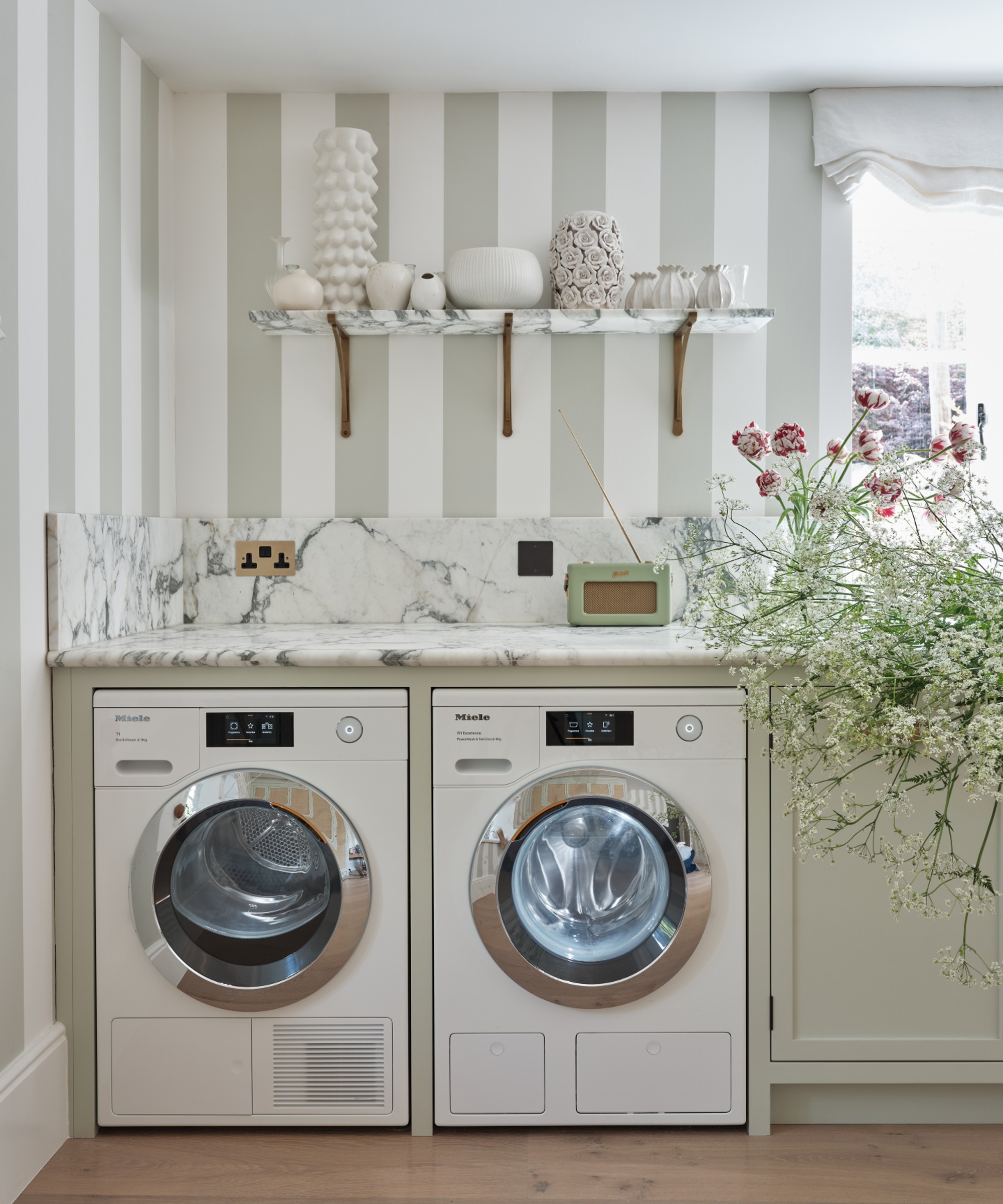
If doing laundry feels impossible, even after repeatedly decluttering a closet, it is probably time to organize your laundry room instead.
Jamie Hord, professional home organizer and founder of Horderly says, ‘If a homeowner finds laundry is always piling up, consider scheduling laundry into your calendar to create some habits of highly organized homeowners. This will hold you more accountable and you won't get behind.’
Lauren Saltman, professional home organizer and founder of Living. Simplified. adds, ‘We want this room to be a place we don't mind spending time in. This is why I always suggest decluttering and organizing your laundry room when you struggle with getting this chore completed each week.
‘Some things to declutter from your laundry room now include non-laundry items that belong elsewhere in your home, such as books, sports equipment, or shoes. Then, take stock of your laundry supplies. Did you buy a stain remover product that you didn't like and won't use? Time to toss it or pass it along to a friend.
'Do you have multiple open containers of the same detergent? Then combine them and place the full bottles on an upper shelf to be used when the open container is finished. By limiting your supplies to what you actually use and need, you'll reduce visual clutter and make your laundry room and routine feel more manageable.’
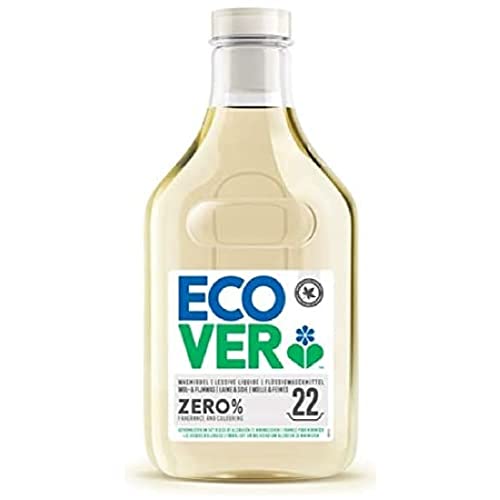
A lot of laundry detergents can be toxic, so switch to non-toxic alternatives for a healthier home. Ecover has become a staple for many of my family members. I use it to keep eczema and acne under control, my mom uses it to help psoriasis, and my grandmother uses it to avoid setting off my grandad's breathing problems
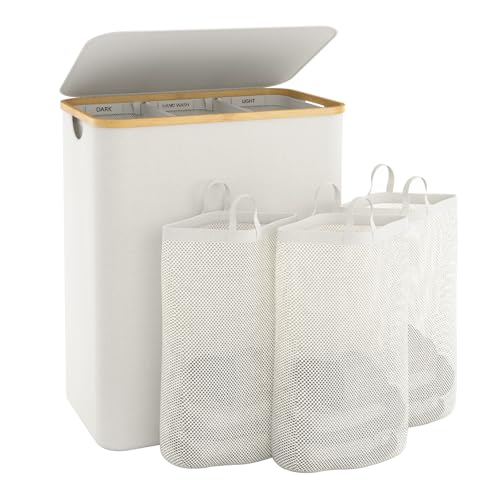
This extra-large laundry hamper is perfect for busy households, with three removable bags to make pre-sorting laundry super simple.
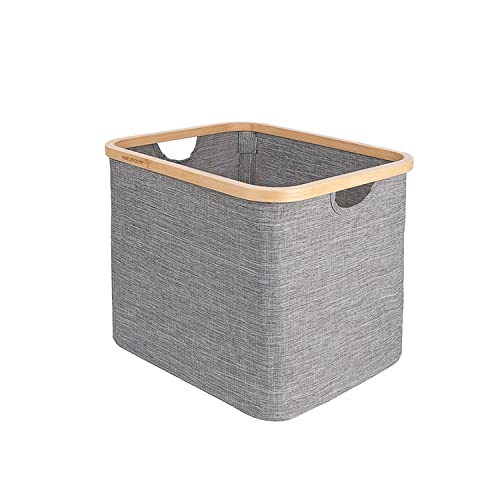
I love my collapsible laundry basket. I use it for everything from laundry day to decluttering. The fact it folds down means I can store it easily behind my dresser in between uses so it is not always in the way.
2. Your pantry is always messy
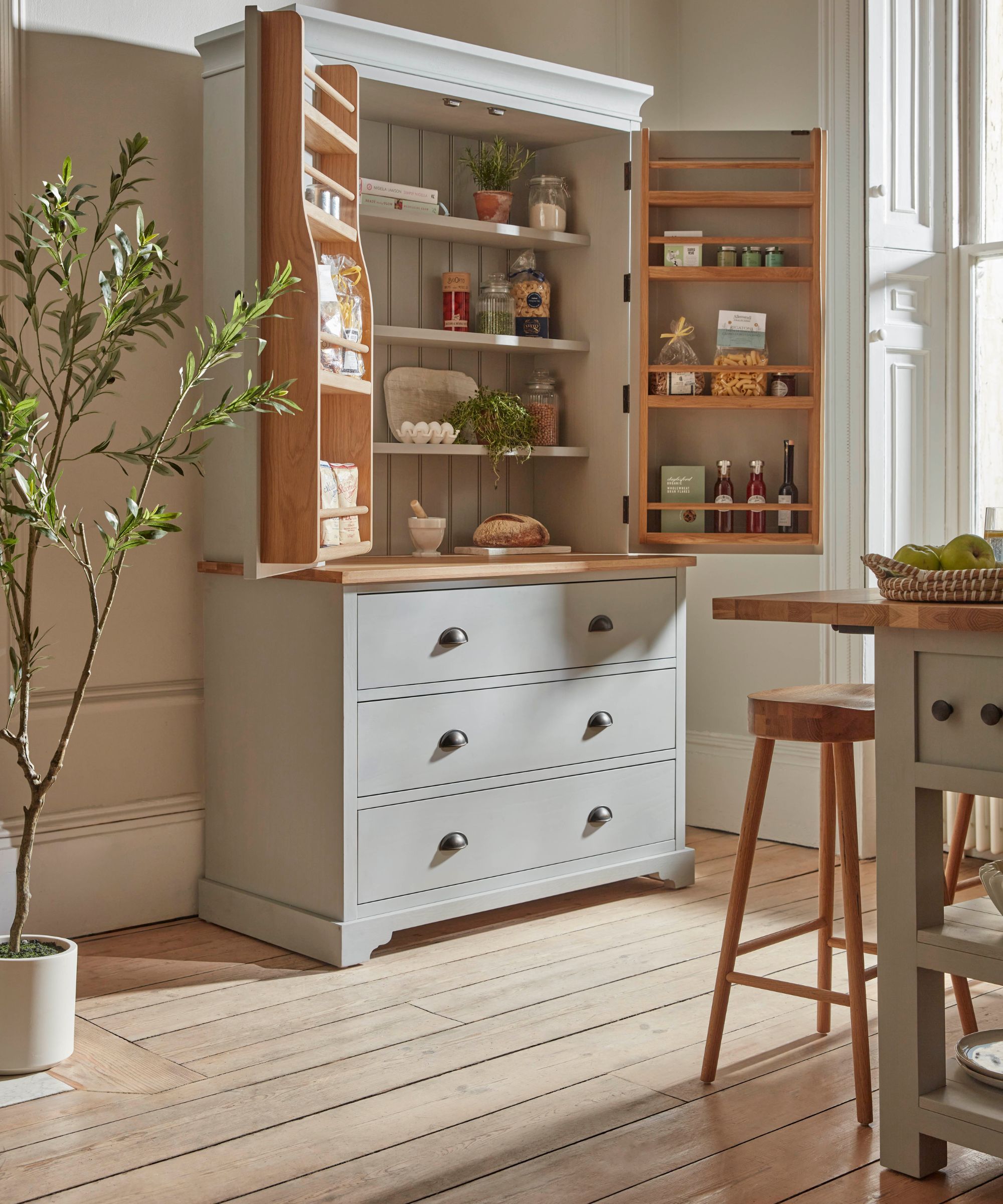
Pantry organization can make or break a kitchen, and turn cooking from an odious chore into a fun pastime. If you find that you are constantly frustrated in this space, it is probably time to reassess and declutter your pantry.
Lauren continues, ‘A messy pantry can lead to wasted food and frustration, so regular editing is key. Start by taking everything out of your pantry and checking expiration dates. Toss expired items and donate unopened, non-perishable foods that your family won't eat. Next, group similar items together into categories such as snacks, baking supplies, canned goods, condiments, breakfast, and so on.
‘You can then do this to organize a fridge and organize a freezer, too,’ she adds.
After decluttering a pantry, you’ll need to create solid storage systems to keep it in check and prevent your stress from returning. Lauren suggests, ‘To maintain an organized pantry, use clear bins to contain loose items and label each container so everyone in the home knows where things belong.
'A label maker, available at Walmart, makes this task quick, easy, and uniform. This is important not only when cooking or grabbing a snack, but when putting away freshly purchased groceries. Shelf risers can help maximize vertical space, while lazy Susans [such as the Everything Organizer Deep Turntable from The Container Store] are perfect for oils, condiments, and sauces. Be sure to keep heavier items, like full flour or large juice bottles, on lower shelves for safety.
‘Then, for a pantry that stays organized, consider adding a "first in, first out" system. When putting away groceries, place newer items behind older ones so that the older ones get consumed first.’
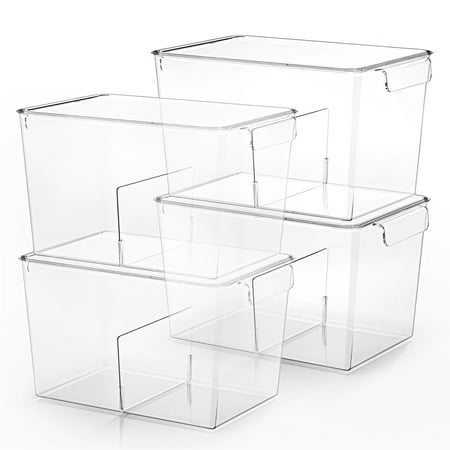
Clear plastic bins allow you to keep tabs on your fresh food items, so nothing is left to expire without you spotting it.
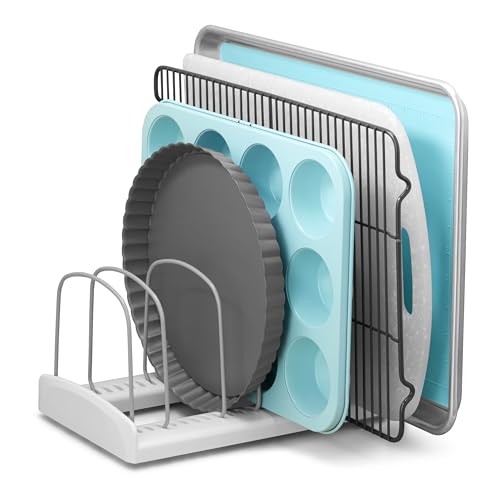
Baking trays and cutting boards ar some of the most awkward kitchen items to store. This adjustable organizer helps keep them stacked neatly in your cabinets to stop them falling over.
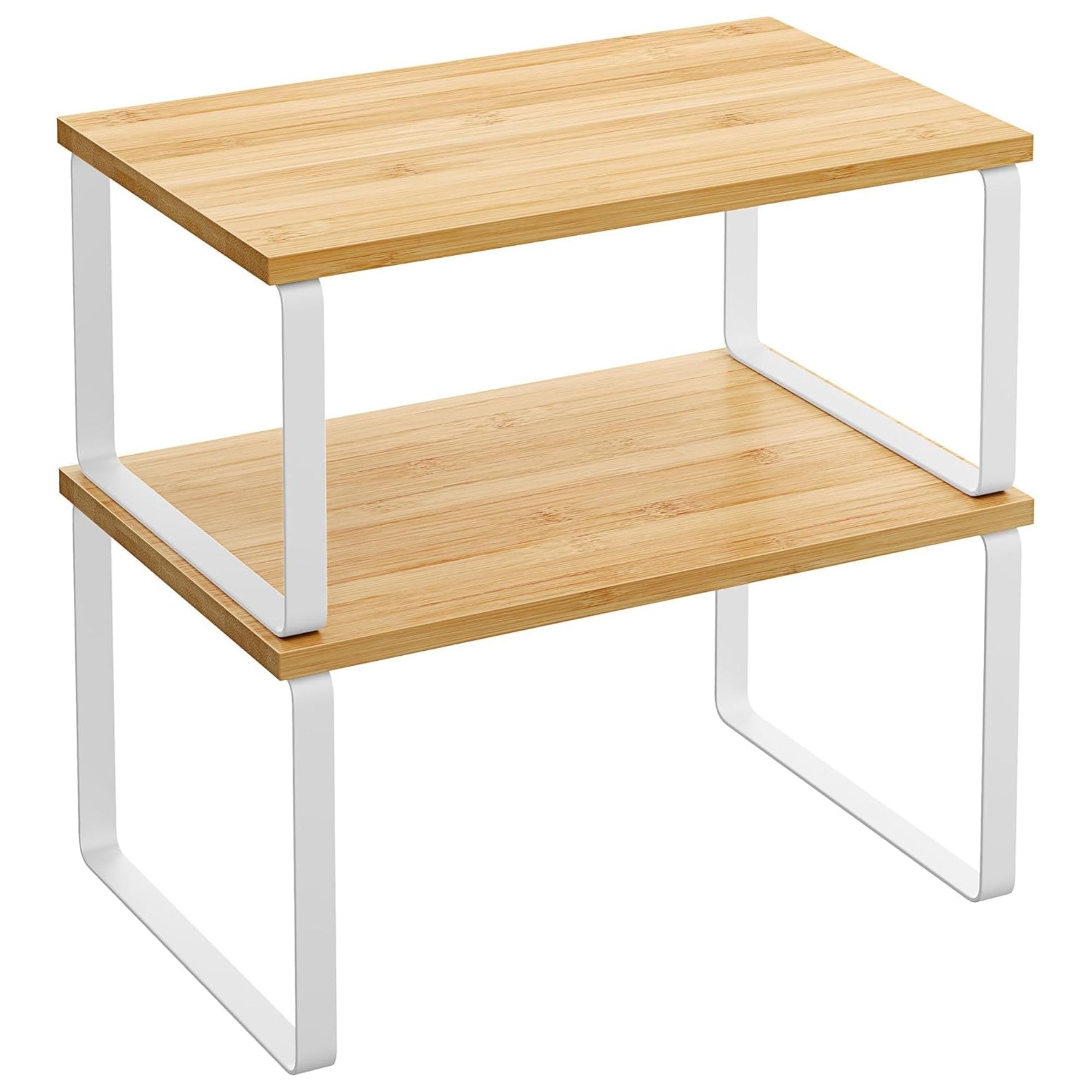
Available in two separate sizes, these organizer shelves can be stacked, nested, used side by side, or in a L shape formation, and come in five different colors to suit each and every space.
3. Mail makes a mountain
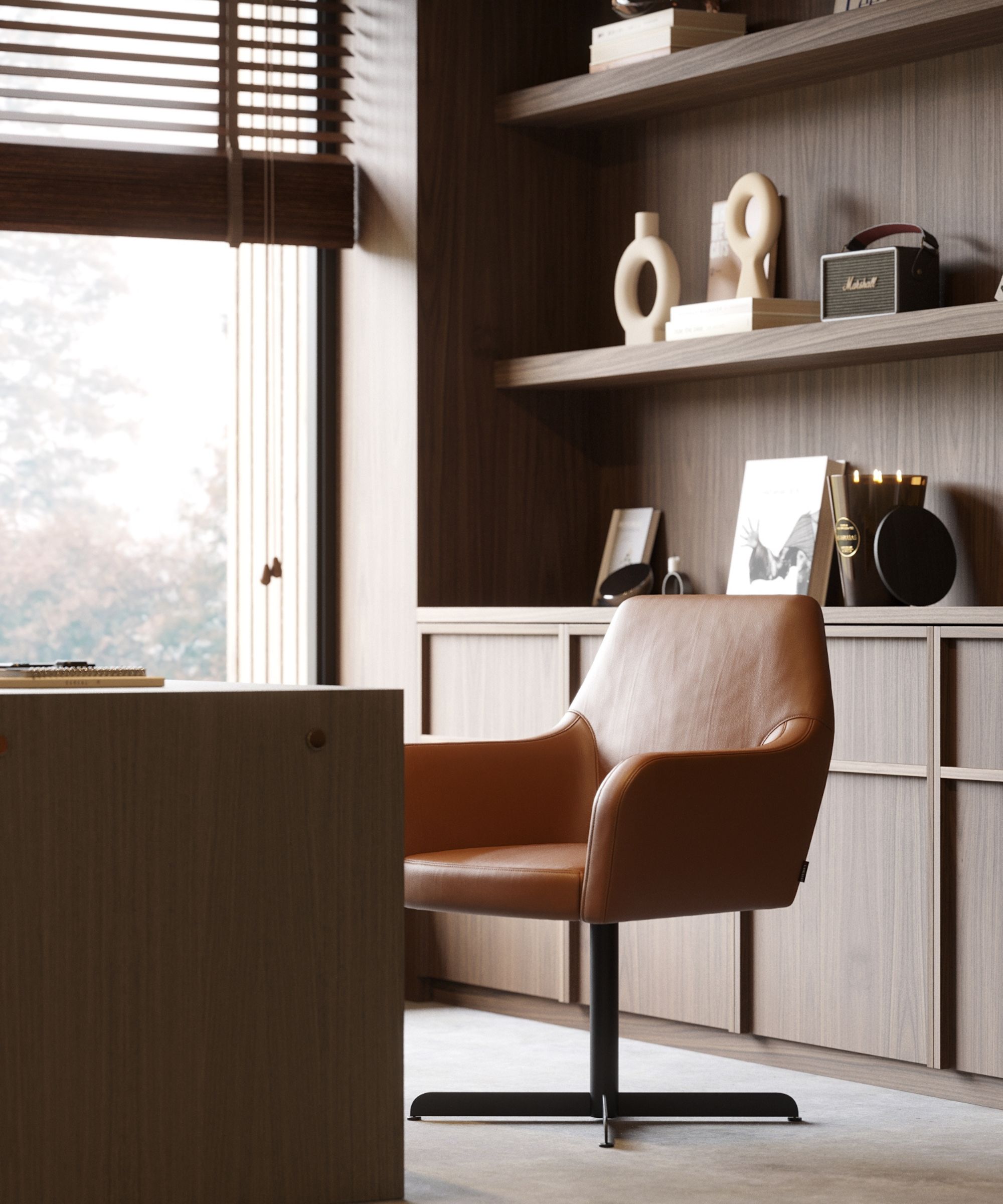
Organizing mail sounds simple, but it is easy for it to get out of hand. Jamie Hord suggests, ‘When bringing mail into the house, go straight to the trash to toss any junk mail. Any action items should have a spot that you go through regularly. If it's scheduled in your calendar, this area should never pile up.’
The same rules apply to organizing important documents. Always have a system in place, such as this decorative basket filing cabinet from Walmart, to keep tax documents, medical documents, and other vital information neat for quick reference should you need them.
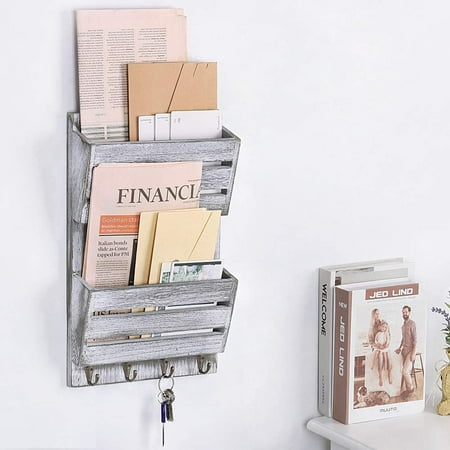
To make organizing mail quick and easy in a busy household, use a wall-mounted organizer that can separate mail into family member or by urgency. Then schedule time in to clear it out each week.
4. Flat surfaces are buried
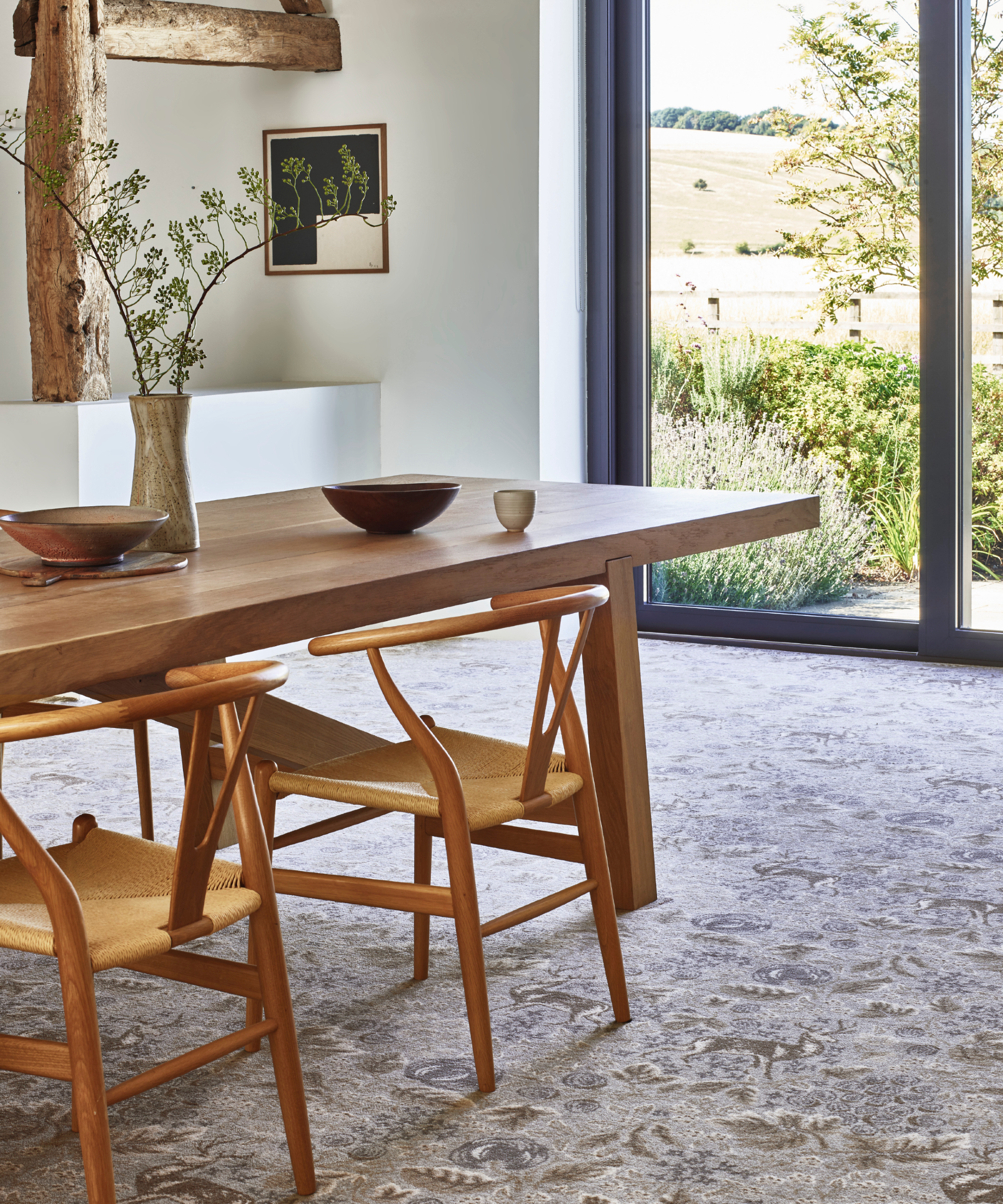
Flat surfaces such as tables, counters, and dressers are some of the most cluttered areas of every home. If yours has you tearing your hair out, it is time to root out the main cause.
Amélie Saint-Jacques, expert home organizer, Kon-Mari consultant, and founder of Amélie organizes explains, ‘Flat surfaces also get cluttered. It's important to analyze what ends up there and why.
‘For example, if your electronics always end up piled up on the countertop, set up a charging station for both corral devices and accessories as well as to make charging convenient; this will make the placement of electronics there intentional.
‘If your mail always piles up, set up an area with a letter opener, a recycling bin, a shredder, available at Walmart, and a filing system.
‘Items need designated spots and will look less messy if they are not contained, like in a tray or a basket.’

This handy charging port can charge four devices at once to limit plugs and keep all your items together.

Baskets are the best go-to for creating drop zones. Be it in your entryway, living room, or hallway, these can quickly corral clutter, making it easier to put away.

Even something as simple as a small woven tray can help to make items on flat surfaces look more intentional, preventing overwhelming clutter piles all over your home.
5. Kitchen cabinets are overflowing
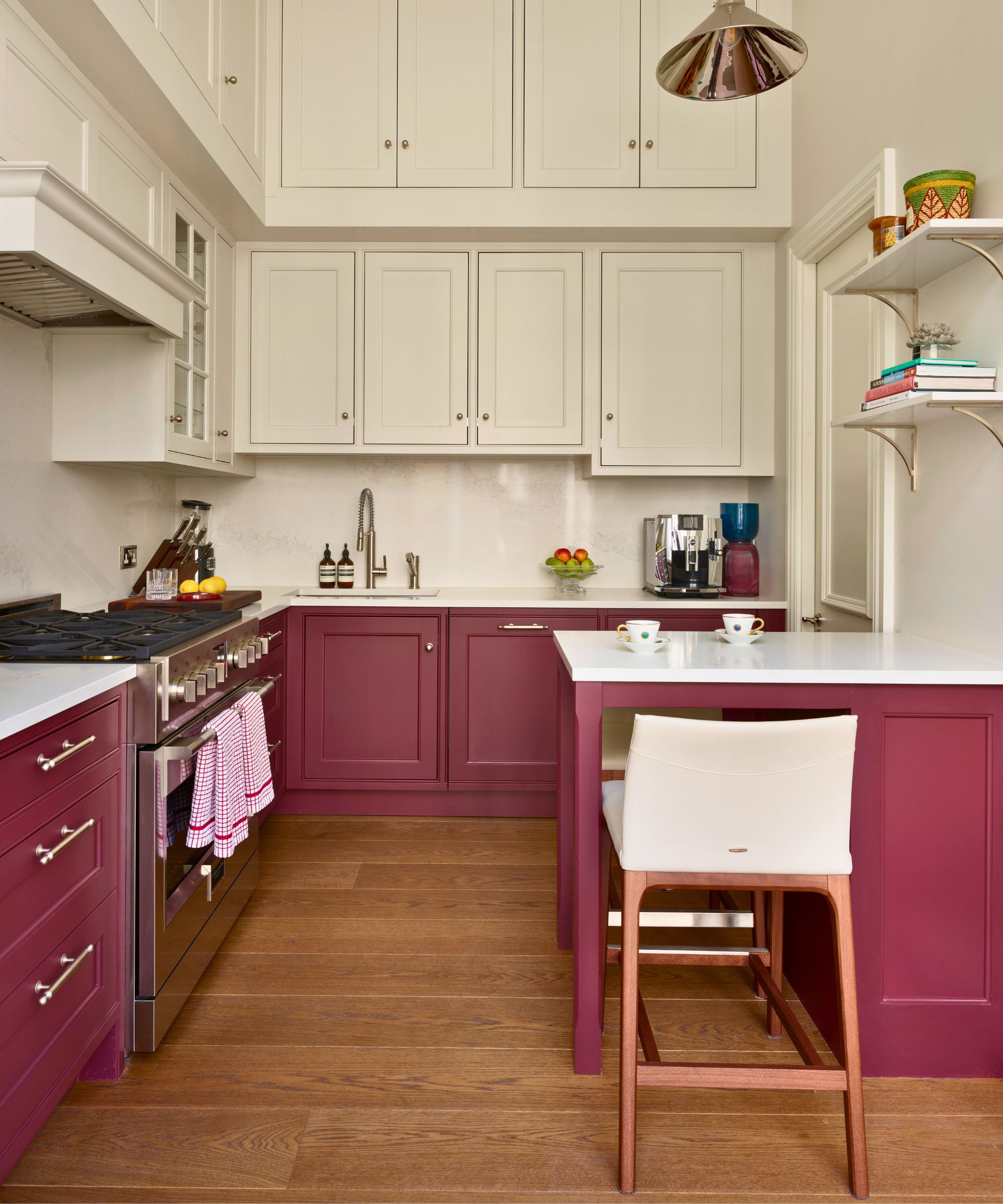
Organizing kitchen cabinets should not be a constant battle. With the right decluttering tricks and organizational strategies, this spot can be simple to navigate.
Lauren says, ‘If your kitchen cabinets are full and you find it hard to access the items you need, chances are it's time to edit down your dinnerware, pots and pans, and kitchen tools. Don't feel as if you have to declutter your entire kitchen in just one hour. Pick a section and start from there, preferably the area that gives you the most trouble.
‘Begin by removing everything from that particular cabinet or drawer and group similar items together. Assess what you actually use regularly and what can be donated or stored elsewhere, for example, items that are used only once or twice a year.'
If you have multiple sets of dishes, consider keeping only one everyday set and one set for special occasions. The same goes for glassware, coffee mugs, water bottles, and serving platters, keeping what you love and use most often.
Simply decluttering kitchen cabinets is not enough to put a stop to the stress. You need to make use of every inch of space to create good lasting systems. Lauren continues, ‘To maximize your cabinet space, stack plates by size, nest bowls together, and use shelf risers to create additional levels.
Drawer dividers, such as this bamboo adjustable divider from Walmart, or small bins help contain loose items such as measuring cups and cooking and eating utensils. If you have limited space, consider storing rarely used items in a separate area, such as a storage room or basement. Lastly, aim to store frequently used items at eye level for easy access and keep items grouped to maintain order.
Lauren adds, ‘Remember, the goal is to create a kitchen space that you enjoy being in, whether to prepare a meal or to eat. Having a kitchen tool with only one purpose, or more coffee mugs that can even fit in your dishwasher, won't help you create a warm and enjoyable space. Take the time to declutter and organize your kitchen and truly enjoy the cooking process and time spent with family and friends in your kitchen.'
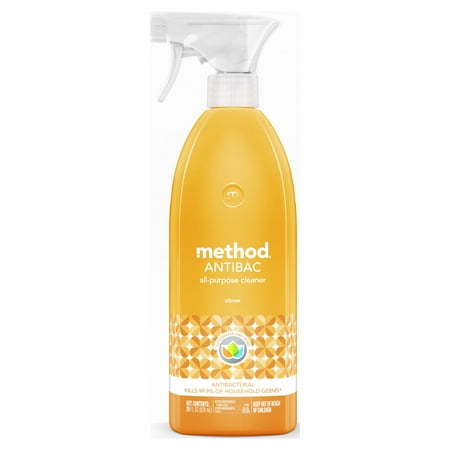
While you have everything out of your cabinets, quickly clean them with an anti-bacterial spray for a full reset.
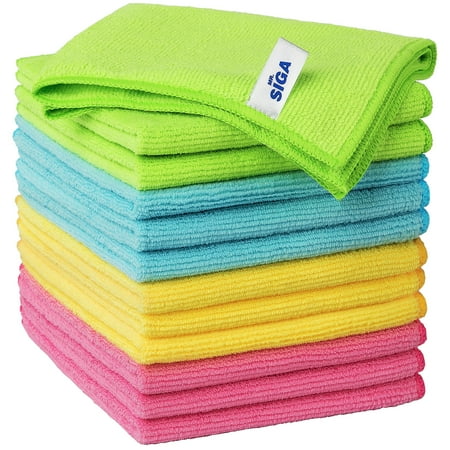
Microfiber cloths can quickly pick up crumbs and mop up spills and stains from cabinets for quick and easy kitchen cleaning.
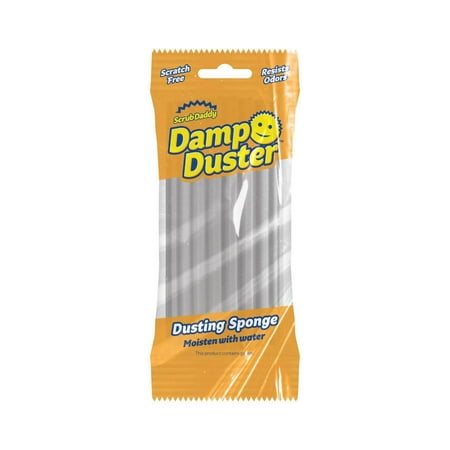
The Damp Duster's deep ridges mean crumbs are no problem, it quickly picks up debris for fresh counters and cabinets, without brushing everything right onto the floor.
6. Your entryway makes it hard to leave
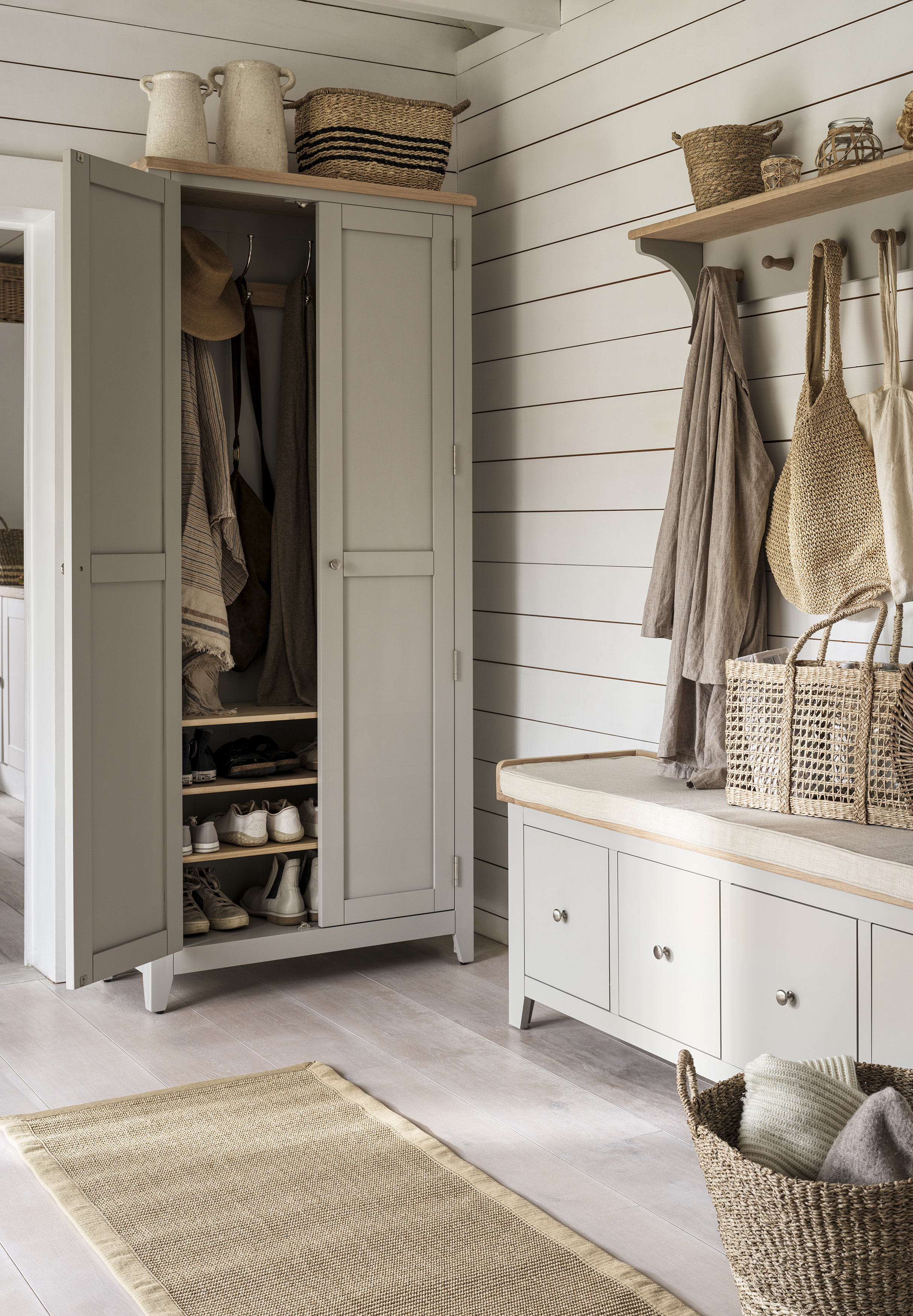
It is not enough to reduce visual clutter in an entryway. You need to make ruthless decisions to help pare back items and create a space that is easy to pass through regularly.
For instance, Jamie Hord says, ‘If entryway coat racks are overflowing, consider decluttering and only keeping the essentials. Five puffy winter coats are probably more of a want than a need.’
Once you have decluttered the items you do not use, such as coats, shoes, and accessories, Amélie adds, ‘Designate spaces for the items that are left; for example, a shoe cubby, hooks for backpacks, a small table and tray for keys and sunglasses.’
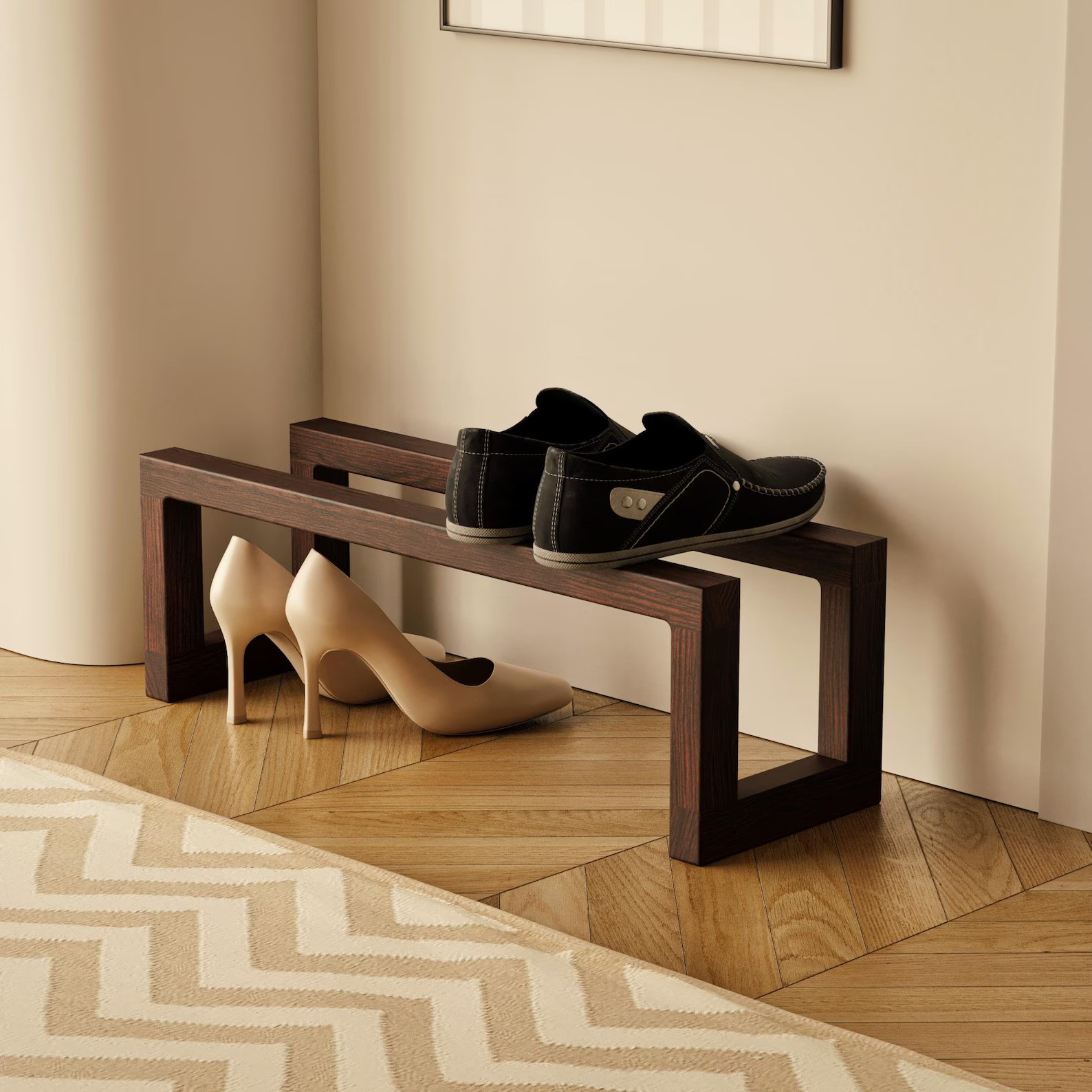
If your shoe drop zone is more functional and streamlined, your family is more likely to use this space for its intended purpose. This minimalist shoe rack is custom made and is offered in 10 different wood types and 10 sizes to suit any household.

Not all your outerwear needs to be kept in your entryway at the same time. Your off-season shoes and coats can be stored away under your bed in storage ready to swap out at the start of the next season.

Mounted to acacia wood, these sturdy coat hooks have enough space for all your essentials without letting you hang up everything you need per season, limiting clutter in your entryway.
Meet the experts
Remember, when dealing with an everyday stressor, simply decluttering is usually not enough – especially as many of us find a way to fill the new space with new items soon enough. Creating stellar home organizing ideas to prevent an influx of replacements and keep remaining items tidy is the best way to stop yourself from tidying when you feel overwhelmed.







